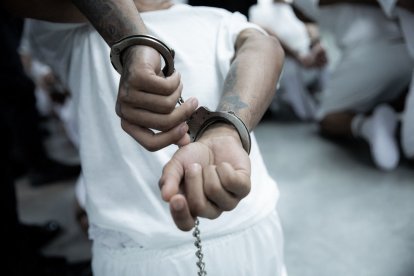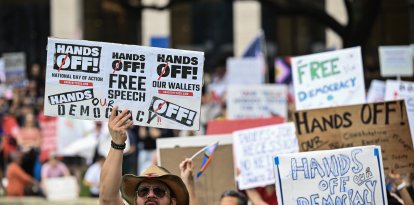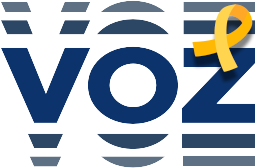Tattoos and social media posts: The government's guide to identify suspected Tren de Aragua members
The document, which was introduced as part of the ACLU's lawsuit against the Alien Alien Enemies Act, begins with three boxes with questions including whether the person is over 14 years old, whether they are a U.S. citizen or permanent resident, and whether they are Venezuelan.

Tren de Aragua gang member
The Donald Trump administration has a guide to determine which Venezuelans can be categorized as members of the Tren de Aragua gang and expelled under the Alien Enemies Act.
The document, which was introduced as part of the ACLU's lawsuit over the use of the law to expel Venezuelans, begins with three boxes with questions that include whether the person is over 14 years old, is not a U.S. citizen or permanent resident, and is Venezuelan.
The guide, obtained by Univision, explains that if any of these three requirements are not met, the person should not be removed under the Alien Enemies Act. Otherwise, he or she goes through an evaluation under six categories, each with a score.
According to the manual, foreigners who score eight points or more should be identified as members of Tren de Aragua, and authorities should issue a "notification and order of apprehension and deportation under the Alien Enemies Act."

World
Joe Rogan says he feels "horror" because of the case of Venezuelan barber deported to El Salvador
Luis Francisco Orozco
Should they score less than eight points after evaluation, they must consider the case with a supervisor from the Office of Chief Legal Counsel (OPLA) before categorizing the Venezuelan as a gang member.
"If membership cannot be concluded, deportation proceedings must likewise be initiated under the Immigration Act," explained Univision, which reviewed the document.
Points can result from factors such as having certain tattoos (four points), appearing on social networks showing symbols of the group (two points) and using gestures or clothing associated with the gang (up to two additional points).
In general, there are six categories:
1. Court findings and official documents: This category includes criminal indictments showing offenses set forth in federal and state law for gang-related activities. It also contemplates court documents that identify individuals as members of Tren de Aragua and describe the criminal activity the individual was engaged in.
2. Self-admission: The category covers cases in which a person acknowledges, verbally or in writing, his or her link to the gang before an official. It is also included when such admission is "involuntary" and occurs through a "lawful interception of communications."
3. Criminal Conduct and Information: Is evaluated if a person is involved in criminal activity along with other members of Tren de Aragua, such as human or drug trafficking (six points); if an agent or intelligence reports identify the person as a member of Tren de Aragua (four points); if victims or community members provide "credible testimony" that the person is part of the organization (three points); if a media outlet describes the person's arrest or operations as part of the gang's activities (two points); or if someone collaborates with their business by acting as a mule or laundering assets (two points).
4. Documents and communications: The subcategories together total 25 points. They include written or electronic communications containing information about gang business, calls with members, financial transactions, etc.
5. Symbols: Subcategories total 14 points. They include aspects that have been frequently mentioned by family members and lawyers of Venezuelan detainees expelled to both the Guantanamo Naval Base and El Salvador, specifically to the dreaded gang prison known as the Confinement Center for Terrorists (CECOT). For example, tattoos, social media posts with symbols that also attribute to Tren de Aragua; mentions showing alliances; hand signs; the use of related insignia, logos, drawings or clothing.
6. Association: Based on surveillance on subjects to show that they frequently spend time with suspected gang members. Also include photos or that they live in the same house. The category totals six points.
RECOMMENDATION





















